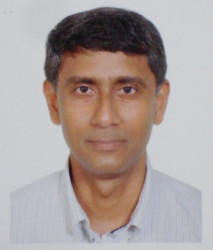By Vijay Datadin
Vijay Datadin is a GIS Specialist. A Chevening Scholar, he holds an MSc in GIS from Edinburgh University, UK
A modern, powerful technology called Geographic Information Systems (GIS) was the focus of a grassroots-organized event on the University of Guyana Turkeyen Campus in November this year. What GIS does is add the easy visual communication of maps to the power of computer databases. The facility can analyse data and present the results on a map as well as in charts, tables and lists. A map of a situation, being a drawn picture, is often quickly understood, as soldiers, surveyors, engineers and architects already know.
GIS can uniquely take advantage of modern sources of data such as increasingly-available and sometimes free, satellite images. It can use data collected with more and more common smart phones, and also use the internet to get and/or send information to users. GIS analysis can offer interesting and powerful insights into important development issues, including social ones like crime, poverty, public health and governance.
Quite often in the past, this technology came only at great financial cost, eg for the hardware and software that were needed.

Today however, sophisticated open source licensed GIS software is available, developed by agencies from around the globe including the US Army Corps of Engineers, American, German and other universities, and even a regional government in Spain. Today there is an even bigger opportunity for all developing countries to apply GIS to their advantage at a much lower cost than before.
GIS was first applied in Guyana in the natural resources sector some 20 years ago. Today, it is being applied in housing development, electricity, water and telecommunications utilities, land tenure, forestry, mining and urban fire risk assessment.
At the event, six professionals gave fast-paced and informative presentations of their work using GIS technology in different spheres. The audience included secondary school students, teachers and curriculum administrators, graduate and undergraduate students, government officials and staff of government ministries, commissions and agencies, academics, health professionals and ICT and GIS professionals from the public and private sector. The response from the education sector was particularly heartening. The buzz after the event continues to resound weeks later.
Dr Barbara Reynolds, Deputy Vice Chancellor (Academic Affairs) of the university opened the event by eloquently framing GIS within the great need that exists for countries such as Guyana to use ICT including GIS to accelerate their development, stating that GIS can “help us to make wise, prudent decisions that can yield dividends for our country.” Minister of Education Dr Rupert Roopnaraine in his keynote address said that GIS capacity development is becoming “increasingly critical” in assisting government in moving Guyana towards a guaranteed good life for all its citizens, and in democratic integration.
A large country like Guyana—nearly as large as Great Britain and with national parks larger than some sister Caricom nations—demands modern ways of managing our natural resources, planning and managing our towns, roads, river transport, sea defences, agricultural water supply, the utility services upon which people depend, public health and disaster response.
The six presentations were from Conservation International (CI) Guyana on the use of GIS to identify priority areas for conservation in Guyana; the Central Housing & Planning Authority (CH&PA) on using GIS for residential settlement development in the Bartica area; Guyana Telephone & Telegraph Company (GTT) on 3D location analysis of high-risk areas; Guyana Power & Light Inc (GPL) on spatial data collection using mobile devices; the Department of Natural Resources and the Environment on its use of licensed Free & Open Source Software for GIS (FOSS4G) for building an Enterprise GIS; and postgraduate students of the UG School of Earth & Environmental Sciences (SEES), who presented an initial look at their project which uses GIS to aid urban fire-risk assessment.
In addition, some 14 posters from 11 organisations or individuals were on display to showcase the use of GIS in Guyana. The posters provided information on the use of GIS in mining operations, housing estates, water, electric and telecommunications utilities, market surveys, protected areas, human rights, a timeline of GIS use in Guyana, FOSS4G, and a use of open data. The support of the Ministry of Education, the University of Guyana and GTT were crucial to the event. The event materials are freely available online at http://day.gis.gy.
Technology alone cannot provide solutions, as several local agencies learnt in the past. For lasting results, we need dedicated human resources, improved procedures and enlightened management that seeks data before decisions. The professionals who showcased ways in which GIS already has and is being used in our country were inspirational.
The demonstration by the specialists, driven by interest in their country’s development, showed that a technology renaissance can flower in Guyana if the existing human resources are properly supported and data-driven decision-making is pursued.





